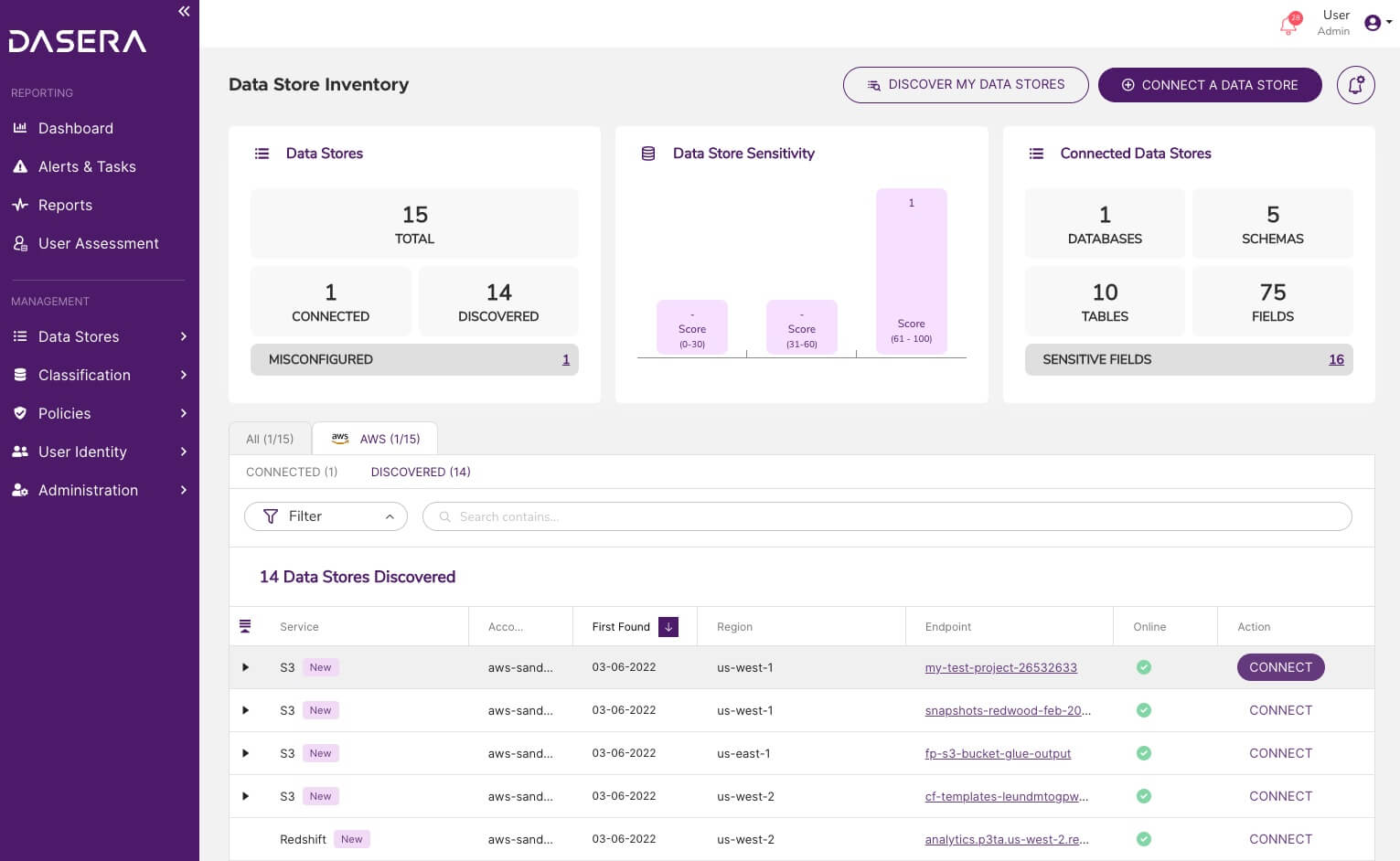
At Dasera, customer obsession is one of our key values. We listen to our customers' feedback and continuously build new features and improve existing ones to help them detect and eliminate risk as early as possible.
We’re excited to announce our new Mt Rainier 4.0 release which dramatically improves cross-functional collaboration to better protect data at scale. This release incorporates tailored roles, interfaces, and customized workflows for Data and Compliance team members, all of which save time, money and energy every single day. It expands our predefined and custom classification capability to healthcare, financial and other verticals and brings in the User context with Okta Universal Directory Integration and a new User Assessment Dashboard. In this blog, we’ll go into detail on each to help you unlock even more value from your data.
Why Mt. Rainier?
Mt. Rainier features an active volcano and massive glaciers. Just as Mt. Rainier bridges hot and cold, Dasera’s Mt. Rainier release bridges cross-functional silos to help enterprises better protect their crown jewels -- their data!
What’s in it for You?
The cloud continues to revolutionize the amount of data enterprises are storing and using. According to Cybersecurity Ventures, data stored globally will exceed 200 zettabytes (ZB) in 2025, with over 100 ZB of data in the cloud.
But Security and Compliance teams tasked with protecting data are already overwhelmed. Security teams don’t have sufficient context to know which data are sensitive and who should/shouldn’t have access. Compliance teams don’t have the technology to enforce compliance policies and have largely relied on manual, time consuming audits and self-attestations. Meanwhile, more employees need access to more data to make better decisions. The challenge of empowering employees while protecting data at cloud scale and cloud velocity has largely remained unsolved.
Mr. Rainier 4.0 Highlights
Integrate with Okta Universal Directory Services to get User Metadata
Compromised identity has been one of the most common prevalent threat vectors. Many times an employee has access rights to various deep-lying parts of the business due to being with the organization for a long period of time and changing roles as they go along and access never being revoked. The risks of allowing such access to certain systems can range from the employee accessing or destroying sensitive data through to the entire corporate environment becoming compromised.
Dasera natively integrates with your Okta Universal Directory to get the user metadata including name, department, status, etc., and map database users to actual employees. Dasera can highlight “ghost” data store users that do not map to an employee and help build data protection policies based on this user metadata.
Empower Data Owners with the Full Data and User Context Visibility
Generally, business policies are defined by Security, Compliance and Data Teams even before the data is collected. But today they struggle to do their job efficiently. Security teams don’t have sufficient context to know which data is sensitive and who has access to it. Compliance teams don’t have the technology to enforce compliance policies and have largely relied on manual, time consuming audits and self-attestations. The Data team who has ownership of the data is finding it difficult to allow data usage while maintaining its quality and integrity.
Let Dasera empower Data Owners with continuous visibility into their owned data set, help them classify and review sensitive data in them. Dasera can provide them with insights into what kind of queries are being run by which Users/Departments and alert them when defined business policies by security and compliance teams are being violated via automated notification workflows. Dasera can help them make educated decisions on who should/shouldn't be granted access to the data.

Get Continuous Visibility into Your Sprawling Data Lake/Ocean
As organizations migrate to cloud, new data stores can be created with fewer mouse clicks. S3 buckets are created so frequently that it’s tough for Security and Compliance teams to keep up with them. Based on a recent study by Ermetic, titled “AWS S3 Ransomware Exposure in the Wild,” 90% of these buckets are susceptible to attacks due to misconfigurations and compromised identities. Everyone is looking for these questions to be answered:
- What are all the S3 buckets in my cloud environment?
- Are any of the S3 buckets misconfigured?
- What data has been loaded into these S3 buckets?
- Has any sensitive data been loaded into these S3 buckets?
- Does the mere presence of some sensitive data in these S3 buckets violate established policies?
Dasera can automatically discover S3 buckets as they sprawl in your environment, detect misconfigurations, and classify semi-structured data, allowing you to continuously monitor and apply business rules against the sensitive data stored in those S3 buckets.
More Efficiently Classify Data via Automation and Workflows
Dasera has expanded its predefined list of classifiers for Healthcare and other verticals. You can also create your own custom Sensitive Data Types based on Field Name and/or Field Content matching via regular expressions or dictionary uploads. You can define sensitivity levels and associate contextual business glossaries as tags to it and define policies to notify the respective teams when the business rules are being violated via automated workflows, thus reducing the time, effort and energy required to maintain Data Quality and Integrity.
Along with all of the above, Dasera achieved its SOC II Type II attestation and is ready to protect your data at cloud scale and cloud velocity.
Click here for more details on our Mt. Rainier release.









